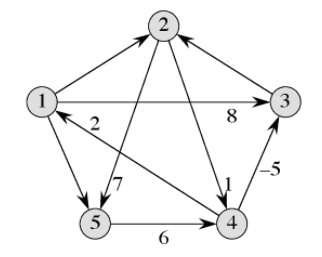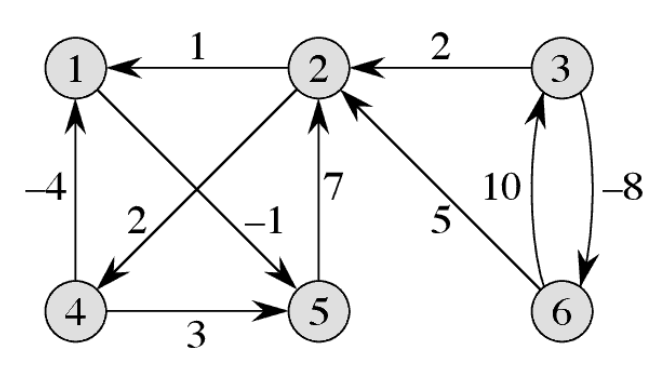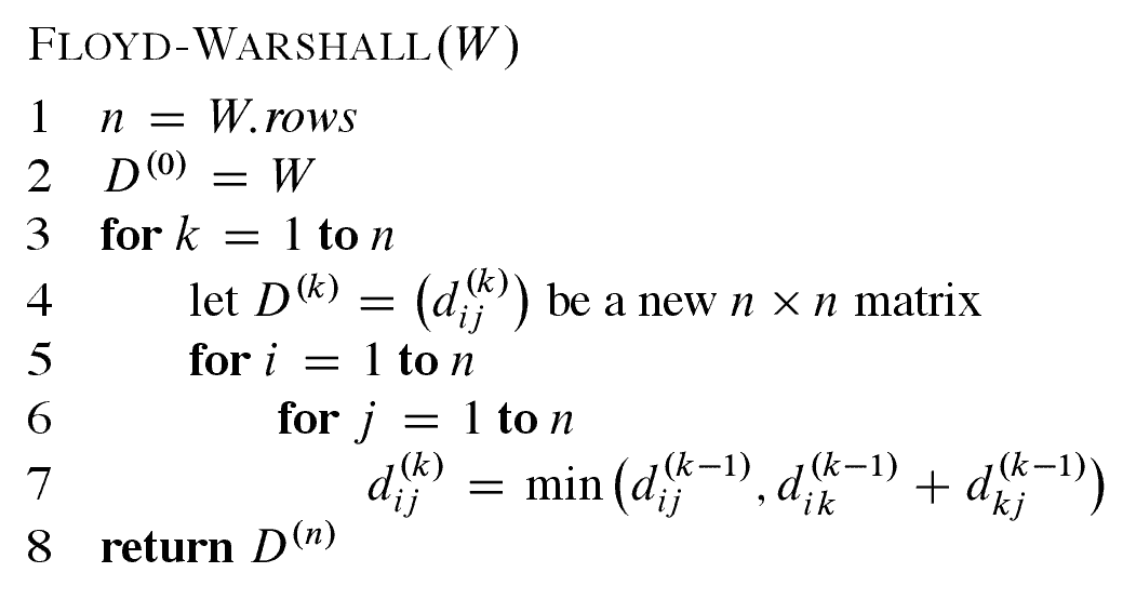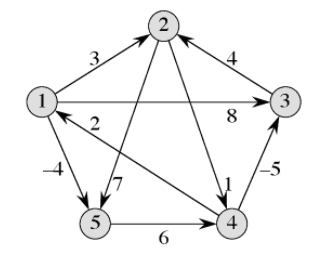ADSA
Homework 10
Read sections 25, 25.1 and 25.2 from CLRS
Please read this with the goal of using the knowledge to do the homework below.
Watch lectures
- Running time of all-pair shortest path algorithms - Floyd-Warshall and Dynamic programming
- All-pair shortest path using dynamic programming
- Floyd–Warshall algorithm
Question 1
The time complexity of the Dijkstra’s algorithm, when the priority queue is implemented using Fibonacci heap, is O(VlgV+E) and that of the Bellman-Ford algorithm is O(VE). These are both single-source shortest path algorithms. One straight-forward technique to obtain all-pair shortest paths is to run one of these two algorithms for every vertex in the graph. This makes the running times O(V2lgV+VE)) and O(V2E)) respectively. What will be the running times for (a) sparse graph, (b) dense graph, in terms of E?
Question 2
If a dense graph does not have negative weights, is it theoritically equivalent (in terms of speed) to run Dijkstra’s algorithm |V| times instead of the Floyd-Warshall algorithm? Why?
Question 3
Mary wants to solve the single-source shortest path problem on a dense graph with negative weights but she has the Floyd-Warshall all-pair shortest path algorithm implemented already. It is ok (in terms of speed) to use the implementation that she already has? Explain.
Question 4
Original question: For the directed graph below, trace the dynamic programming implementation for calculating all-pair shortest path to obtain the all-pair shortest paths. Calculate L(1), L(2), L(3), L(4), and L(5). For the missing weights assume the following weights: {(1,2): 1, (1,5): -1, and (3,2):1}. Verify your answers using the implementation in the appendix. (There is a negative weight cycle so your answers may not match.)
Corrected question (please ignore this if you already submitted): For the directed graph below, trace the dynamic programming implementation for calculating all-pair shortest path to obtain the all-pair shortest paths. Calculate L(1), L(2), L(3), L(4), and L(5). For the missing weights assume the following weights: {(1,2): 1, (1,5): -1, and (3,2):10}. Verify your answers using the implementation in the appendix.

Question 5
Run the Floyd-Warshall algorithm on the following weighted, directed graph and show the matrix D(k) that results in each iteration of the outer loop. Here the input W is a n x n weight matrix where n is the number of vertices. dij(k) is the weight of the shortest path from vertex i to vertex j for which all intermediate vertices are in the set {1, 2, …, k}. When k = 0, dij(0) = wij.


Question 6 (programming)
Find shortest paths between all ‘named’ places in the map of Silicon Valley below. As your answer, provide a table of all-pair shortest paths. You are welcome to use any ‘libraries’ or ‘publicly available code’.
![]()
Appendix
All-pair shortest path using dynamic programming (example, solution for a problem different from Q4)

import numpy as np
W = np.array([[ 0, 3, 8, np.inf, -4],
[np.inf, 0, np.inf, 1, 7],
[np.inf, 4, 0, np.inf, np.inf],
[ 2, np.inf, -5, 0, np.inf],
[np.inf, np.inf, np.inf, 6, 0]])
def EXTEND_SHORTEST_PATHS(L, W):
n = len(L[0, :])
LL = np.full_like(L, np.inf)
for i in range(n):
for j in range(n):
for k in range(n):
LL[i, j] = min(LL[i, j], L[i, k] + W[k, j])
return LL
def FASTER_ALL_PAIRS_SHORTEST_PATHS(W):
n = len(W[0, :])
LM = np.copy(W)
m = 1
while m < n:
LM = EXTEND_SHORTEST_PATHS(LM, LM)
m = 2 * m
return LM
print('Graph:')
print(W)
print('All pair shortest path distances:')
print(FASTER_ALL_PAIRS_SHORTEST_PATHS(W))
Output:
Graph:
[[ 0. 3. 8. inf -4.]
[inf 0. inf 1. 7.]
[inf 4. 0. inf inf]
[ 2. inf -5. 0. inf]
[inf inf inf 6. 0.]]
All pair shortest path distances:
[[ 0. 1. -3. 2. -4.]
[ 3. 0. -4. 1. -1.]
[ 7. 4. 0. 5. 3.]
[ 2. -1. -5. 0. -2.]
[ 8. 5. 1. 6. 0.]]